Tagged with photography
pixels
Posted January 14th, 2010 at 11:05 am. There are 0 comments.![]()
Artist Jörg M. Colberg creates images that are compressed with a customized jpeg compression scheme.
ajpegis a new image compression algorithm where the focus is not on making its compression efficient but, rather, on making its result interesting.
ajpeg is intended to go the opposite way: Instead of creating an image artificially with the intent of making it look as photo-realistic as possible, it takes an image captured from life and transforms it into something that looks real and not real at the same time.
the human printer
Posted July 2nd, 2009 at 11:33 am. There are 0 comments.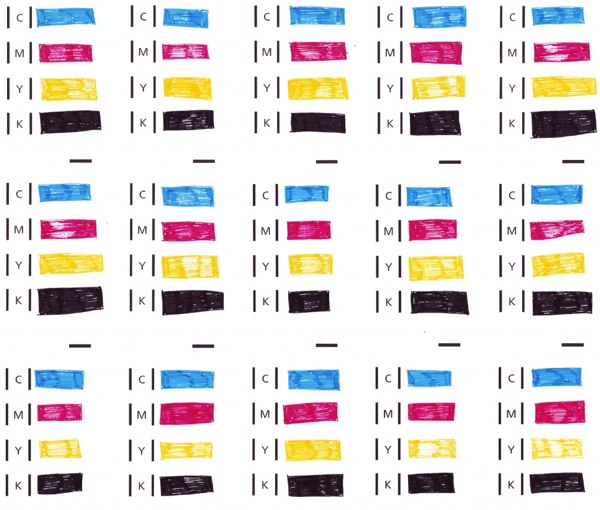
thehumanprinter creates CMYK prints of your photos by hand.
Unlike any other printer thehumanprinter creates unique, individual images each time it prints. Following the same process as a digital printer, thehumanprinter generates the printed product by hand. Throughout the printing process thehumanprinter assumes the role of the machine and is therefore controlled and restricted by the process of using CMYK halftones created on the computer.

Francisco Infante-Arana
Posted June 22nd, 2009 at 2:49 pm. There are 0 comments.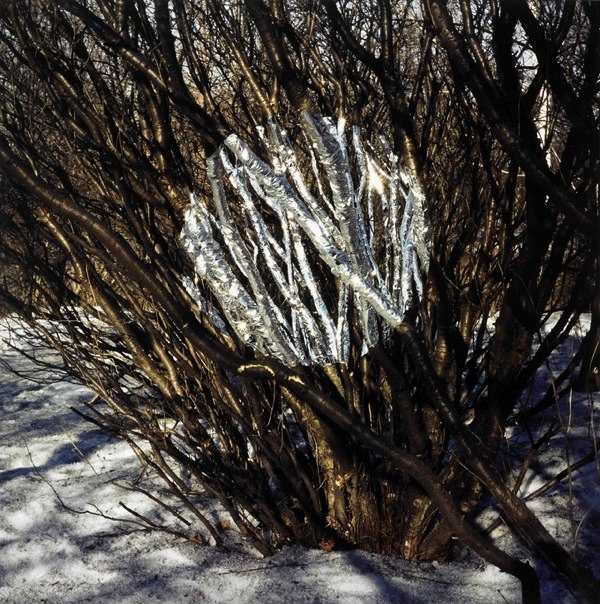
Aluminium foil on trees by Francisco Infante-Arana
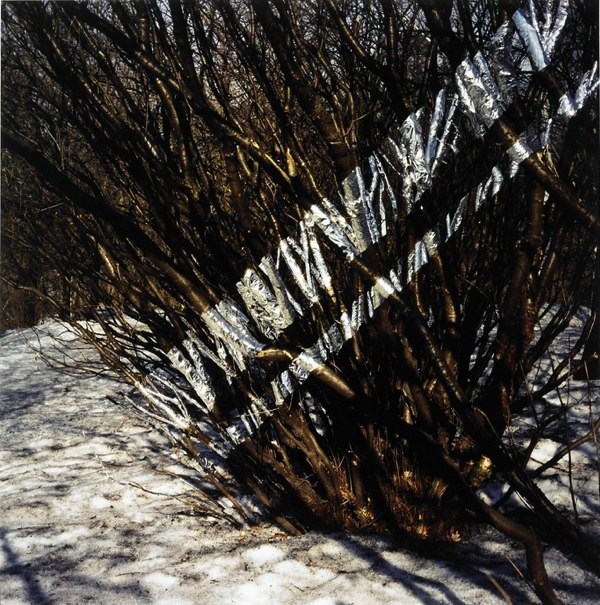
In a similar vein, Jan Imberi
On the Grid
Posted April 30th, 2009 at 7:17 pm. There are 2 comments.
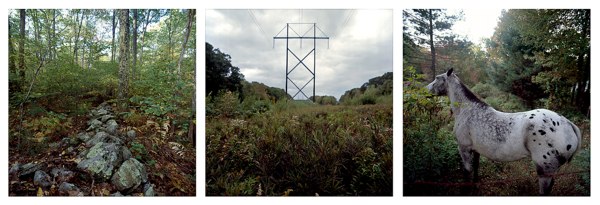
On the Grid is a project documenting the space created by the vast nationwide network of powerlines and the land underneath them. Undeveloped except for the powerlines them selves they carve through the landscape, connected the most rural with the most urban. The shared space, buzzing with the hum of excess electricity, is at times a pristine and beautiful meadow surrounded by forest and others, the uninhabitable tract amongst suburban banality, beautiful in its own right.
On the Grid, a project by Adam Ryder and Brian Rosa, explores the landscape immediately surrounding high-tension electric transmission lines in Rhode Island. Starting near the Ocean State Power facility in Burnllville, Ryder and Rosa spent several days walking along various sites of this arterial infrastructure. Sites were chosen though surveying publicly available aerial photographs and land use maps, and all photos were geotagged with handheld GPS units. In combining the rigid technical process of digital mapping with the subjective practice of landscape photography, this project explores the state as a collection of differentiated spaces that, though seemingly isolated, are networked.
The resulting photographs showcase the topographical diversity surrounding these structures, whose own narrow terrain remains virtually unchanged throughout their straight, incisive paths. The path of the power lines functions as a rural to urban transect, cutting through farmland and commercial parks, cul-de-sacs and strip malls, used car lots and interstate highways.
As human intervention in the natural landscape sprawls to the most remote areas of the state, our lived space becomes increasingly regulated and our encounters with equivocal territories are especially rare. In more urbanized areas, we lose our relation to places which seem to exist unto themselves, where one can feel alone and unhindered. The ambiguity of the land occupied by high-tension power offers the possibility of experience outside of regulation. Despite being part of an infrastructure that is highly regulated and bureaucratized, the physical space inhabited by these power lines remains easily accessible though its sheer ubiquity. Thus, paradoxically, the realm of power lines seems to exist not only outside of regulation, but also outside of the normative properties of the native landscape. Whereas an area half of a mile away from a high tension line may be densely wooded, the space occupied by the wires will be clear-cut, devoid of trees and exhibiting, at most, low shrubbery and grass. The uniformity of this narrow swath as it cuts through the landscape reveals as much about its own spatial utility as it does of the landscape it bifurcates across the state (and beyond). It is this topographical sameness that makes the power lines amazing sites of contrast against both development and the natural landscape.
On the Grid invites reflection on the blurred relationship between networked technology, the built environment and nature through these buzzing monoliths.
– Website Text (An image on the original website)
They did a nice interview on the NPR show Living on Earth (mp3 link).
Quoting here,
Yeah absolutely, it’s a really unique tract of land that doesn’t have any development on it except for itself. So, it’s kind of, in a way its really pristine and untouched and…virginal, its kind of, kind of like, romantic and magical in that way.
-Adam Ryder
and
What’s really – I think actually awesome, is the best word I can use to say it – what’s really awesome about seeing this parade of power lines through the landscape, especially in rural areas is that we’re kind of seeing these, these tendrils connecting humanity as one large organism and it’s a cool way of looking at us, you know what I mean?
-Adam Ryder
Locate powerline grid infrastructure near you via this previous post
landings
Posted March 27th, 2009 at 9:17 am. There are 0 comments.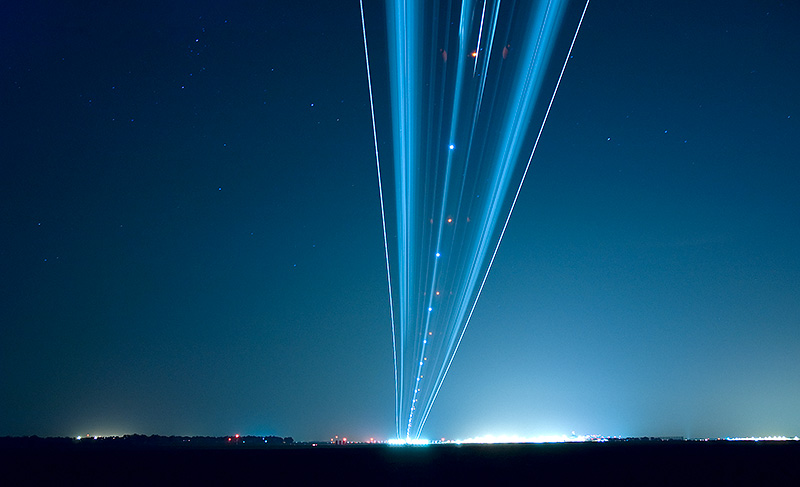
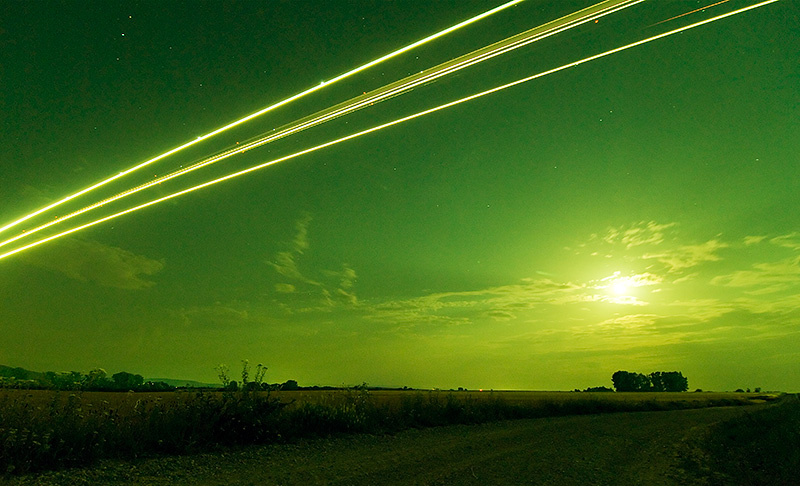
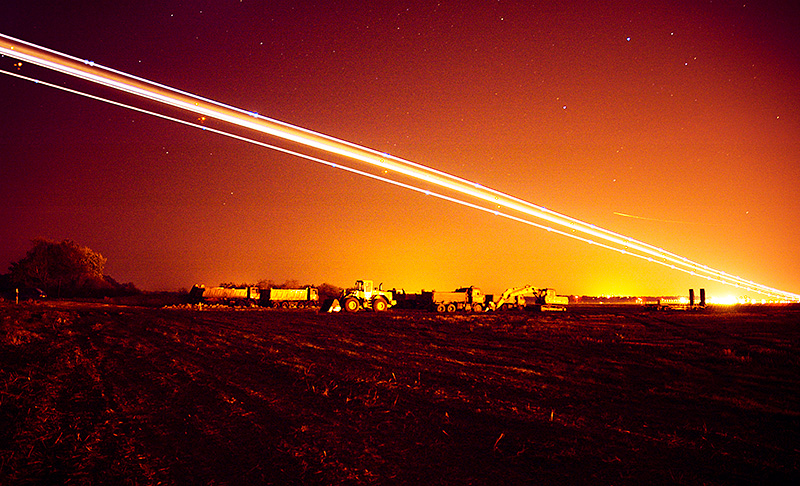
Fantastic long exposures of airplane landings by Branislav Kropilak
Jan Imberi
Posted March 11th, 2009 at 10:40 pm. There are 0 comments.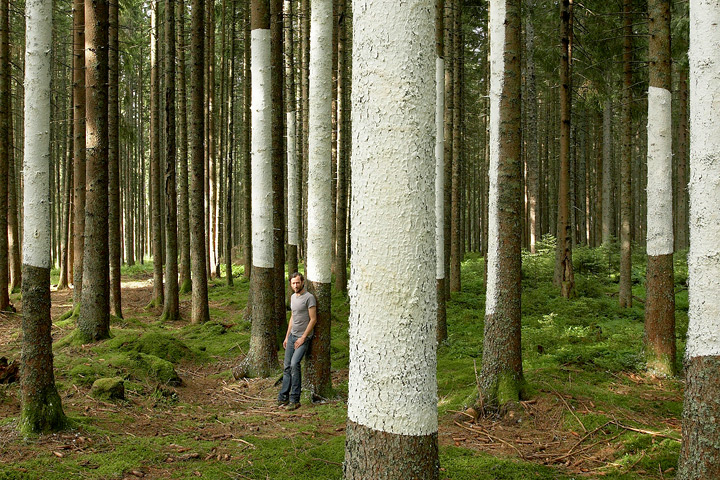
Wonderful and large scale, this installation / photograph is the creation of a super flattened space. Seems to be in the tradition of John Pfahl’s Altered Landscapes and Jan Dibbets’s Perspective Corrections.
eyescapes
Posted March 9th, 2009 at 10:37 pm. There are 0 comments.M45 – The Pleiades
Posted November 10th, 2008 at 11:01 am. There are 0 comments.Above a picture of the sky and stars submitted to the astronomy.net group on flickr. Astrometry.net will analyze the photo and return the below interesting information about the sky you have photographed. Seriously amazing pattern matching.
astrometry.net says:
Hello, this is the blind astrometry solver. Your results are:
(RA, Dec) center:(56.7751, 24.1559) degrees(RA, Dec) center (H:M:S, D:M:S):(03:47:6.024, +24:09:21.240)
Orientation:95.02 deg E of NPixel scale:1.96 arcsec/pixel
Parity:Reverse (“Left-handed”)
Field size :2.12 x 1.41 degreesYour field contains:
The star Celaeno (16Tau)
The star Electra (17Tau)
The star 18Tau
The star Taygeta (19Tau)
The star Sterope I (21Tau)
The star Merope (23Tau)
The star ηTau
The star Atlas (27Tau)
The star Pleione (28Tau)
NGC 1432 / Maia nebula
NGC 1435 / Merope nebula—–
If you would like to have other images solved, please submit them to the astrometry group.
Astrometry.net describes their project like this:
If you have astronomical imaging of the sky with celestial coordinates you do not know—or do not trust—then Astrometry.net is for you. Input an image and we’ll give you back astrometric calibration meta-data, plus lists of known objects falling inside the field of view.
The intersection of photography, data and crowdsourcing, with either the photography or the data or both will be an interesting space to watch.
photos from the past
Posted July 15th, 2008 at 4:17 pm. There are 0 comments.Twice a month I get an email from photojojo that shows me a few pictures from my flickr from 1 year ago in a Photo Time Capsule. As things move so fast, and, at least for me, time to reflect and revisit past events seems to be missing from my regular routine. This is why I like getting these emails so much. I can take a peek at a year ago, revisit some memories and generally brighten my day. At the bottom of the mail is a great little form to send yourself a message in the future that will be delivered with your photojojo mail a year from now. A message to oneself feels a lot different than a photo that was meant for both myself and others, but I am interested in reading what I said a year from now.

[ iamtheweather powered by Wordpress And is definitely Not Plastic Bag ]



